3 Pocast Episodes
with Immanuel Koh, Håvard Vasshaug, and Angelos Chonics
Architects often face challenges when dealing with diverse data formats and the manual recreation of forms in Building Information Modeling (BIM) software. These obstacles can result in time-consuming processes, errors, and discrepancies between design intentions and construction execution. AI tools such as LunchboxML, PlanFinder, and Rayon offer solutions to refine conceptual forms and automate object recognition in digital transitions.
This study delves into the applications of AI in architectural data transition, exploring how discriminative and generative models are utilized for automated form recreation and recognition, as well as Streamlined Collaboration. Additionally, it critically evaluates the potential future impact of AI in architecture, including both opportunities and potential dilemmas and hidden dangers.
By examining AI’s role in architectural data transition comprehensively, this study sheds light on how AI can revolutionize the architectural design process while also highlighting important considerations for its responsible and ethical implementation.
We are honored to have 3 experts from different fields join us as guests on our podcast. They will contribute their insights to our discussion.
((click the name to see the detail)
Immanuel Koh
-Assistant Professor of Architecture & Sustainable Design (ASD) and Design & Artificial Intelligence (DAI) at the Singapore University of Technology & Design (SUTD) where he leads research and teaching at the cutting-edge of AI x Architecture.
-Trained at the Architectural Association (AA) in London and holds a PhD from the School of Computer Sciences and Institute of Architecture at the École polytechnique fédérale de Lausanne (EPFL).
-key international figure in AI x Architecture who operates in an original and trans-disciplinary way.
-Principal Investigator for several funded AI research projects with support from, among others, the National Research Foundation (NRF), Ministry of Defence (MINDEF), National Arts Council (NAC), AI Singapore (AISG), DesignSingapore Council (DSG), Urban Redevelopment Authority (URA), DSO National Laboratories, Temasek Laboratories, Hokkien Foundation, Sunray Woodcraft Construction, and National Supercomputing Centre (NSCC).
-Expert consultant at the ZJU-BOSIDENG Joint Research Centre on AI Design and currently conducts research for high-profile architecture practices such as Zaha Hadid Architects (London) and MVRDV (Rotterdam) in developing custom state-of-the-art deep learning models.
-Author of the book ‘Artificial & Architectural Intelligence in Design’ published in 2020
Håvard Vasshaug
-Founder and CPO at Anker
– Founder at Reope
-Co-Founder at Bad Monkeys
-Design Technology Manager at Snohetta, 2015-2018
Angelos Chronis

Angelos is the CEO and Co-Founder of Infrared City GmbH, the Co-Director of the Master in AI for Architecture and the Built Environment at the Institute for Advanced Architecture of Catalonia as well as Senior Research Engineer and Strategy Advisor to the City Intelligence Lab of the Austrian Institute of Technology.
He studied Architecture at the University of Patras and Computational Design at the Bartlett, UCL and has been a Marie-Curie Fellow at the Innochain Innovative Training Network. He has previously worked as an Associate at Foster+Partners and has taught at the Bartlett, UCL, the Bauhaus University, the IUAV in Venice and the TU Graz.
His research focuses on performance driven design and simulation but he has worked in various fields, including AI and machine learning, AR/VR, 3D scanning, digital fabrication and interactive installations. He has lead the development of various design systems and simulation interfaces, including infrared.city, an AI-driven simulation framework for architecture and urban planning which is a now spin-off company of the Austrian Institute of Technology.
01_Introduction : Why AI is Better than just Algorithms
In the realm of architectural automation, the sheer complexity of buildings, encompassing millions of parameters, renders traditional algorithmic approaches insufficient. This is where AI emerges as a transformative solution, offering a new programming paradigm uniquely suited to tackle such intricate challenges.
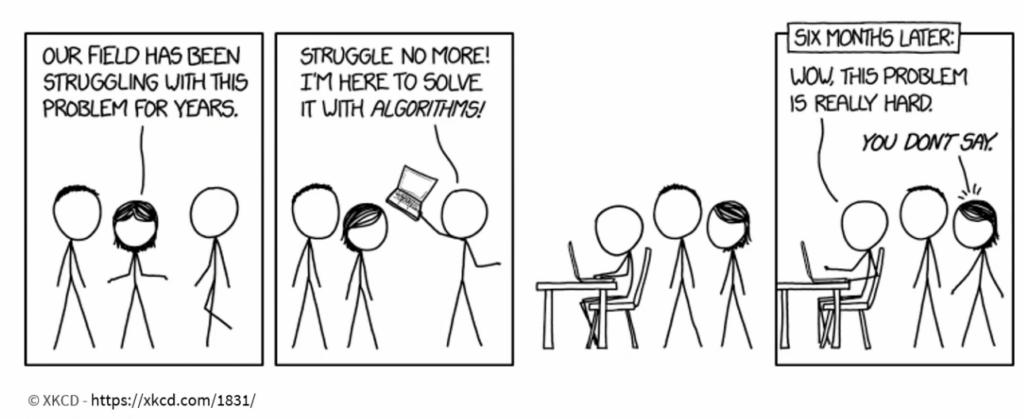
02_AI Integrated Workflow
AI can act as the bridge between phases by connecting data from different type at different level of detail.
Discriminative models enable the understanding and classification of objects, while generative models enrich these objects with detailed information, thus streamlining the transition between different phases of architectural design.
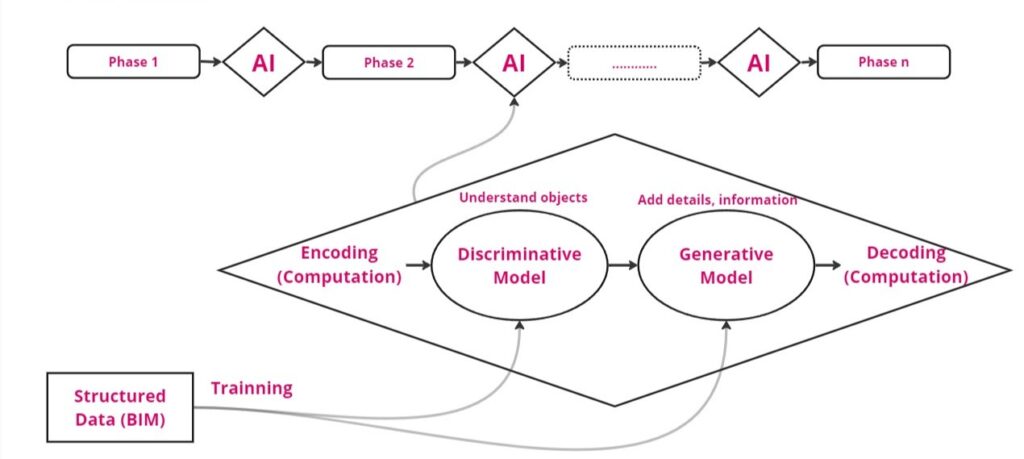
Discriminative models v.s. Generative Model – Example in architecture
In architecture, discriminative models and generative models play distinct but complementary roles.
Discriminative models excel at classification tasks, where the goal is to identify and categorize objects or patterns within a given dataset. For example, discriminative models can be employed in architectural design to classify different building elements, such as doors, windows, and walls, within a floor plan or 3D model. These models analyze the input data and make predictions based on learned features, enabling architects to quickly and accurately label architectural components.
On the other hand, generative models focus on creating new data that resembles existing examples from a given dataset.
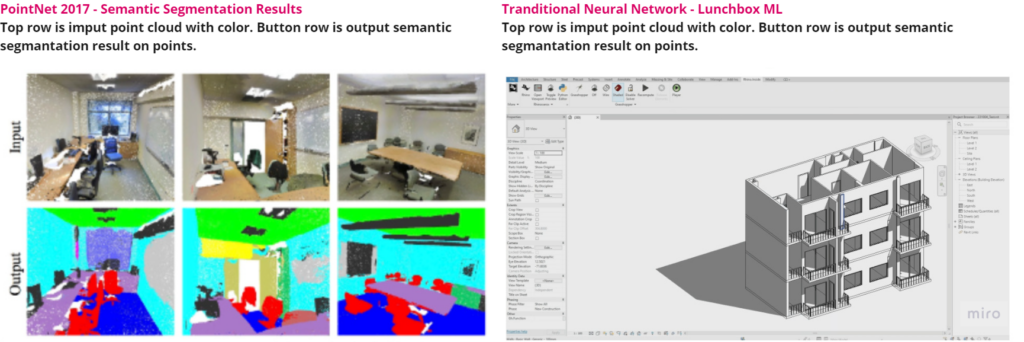

Discriminative models are valuable for classification tasks, helping architects identify and label architectural elements, while generative models facilitate the creation of new design solutions based on existing data, enhancing the iterative design process in architecture.
03_Podcast Statement: The Role of AI in Connecting Architecture Data
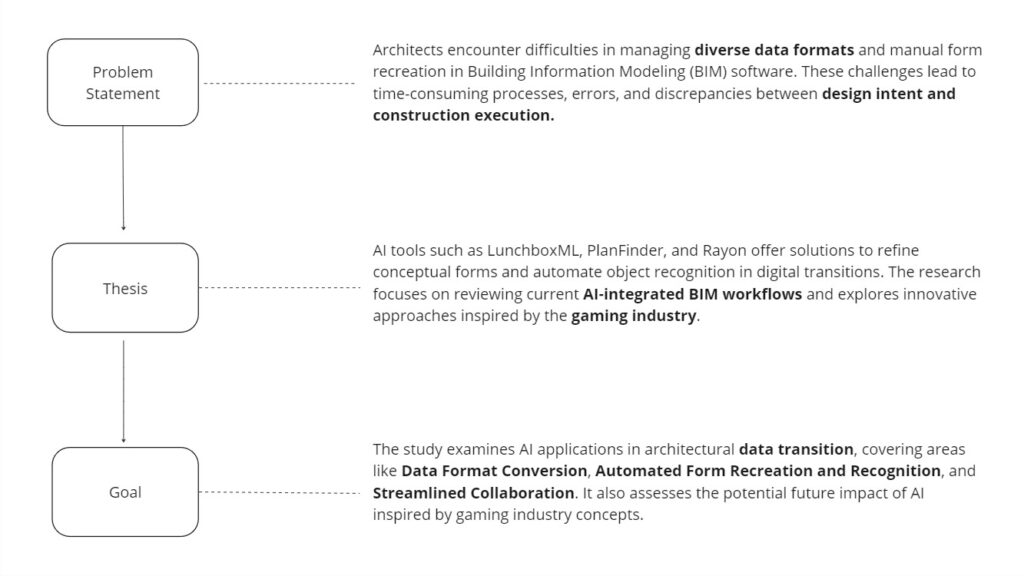
04_Podcast Script
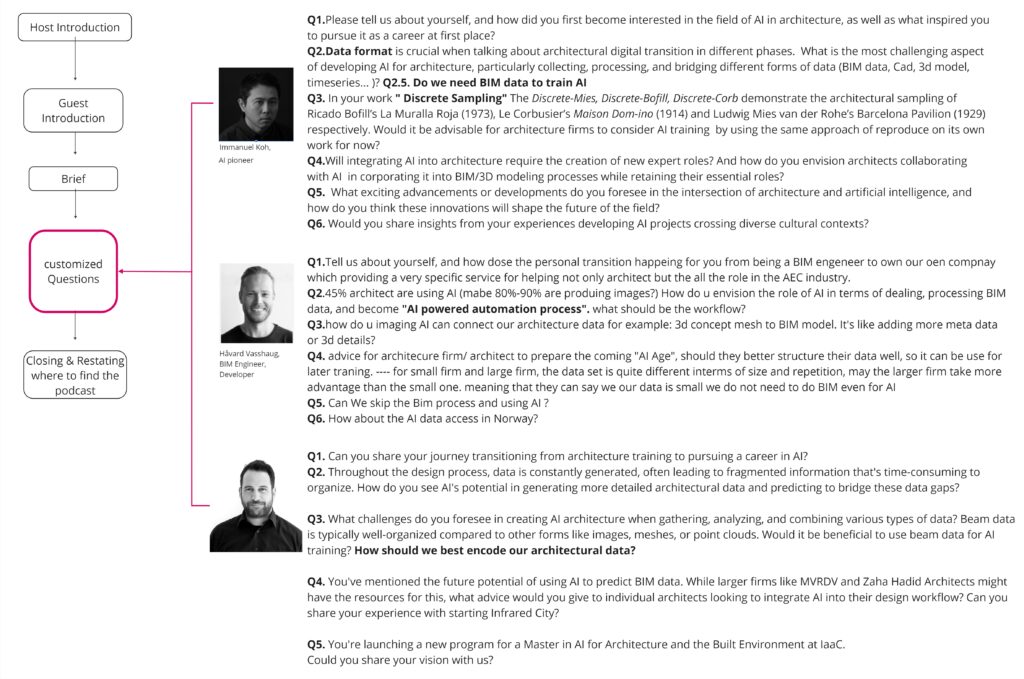
05_1_Podcast Guest: Håvard Vasshaug
recorded on 7th March, 2024


BIM as method for creating and managing digital representations of a building project. It goes beyond just 3D models and incorporates information about materials, specifications, and even maintenance schedules.The interview highlights the growing importance of both BIM and AI in the AEC industry, as well as the potential of AI in BIM.
- Challenges of BIM data nowadays.
- Potential of AI in BIM
- Challenges of implementing AI in BIM
- Possible solutions
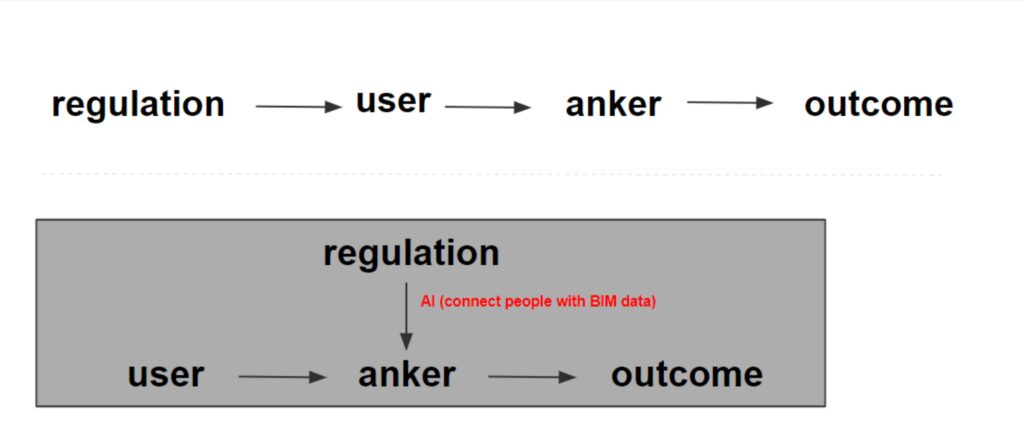
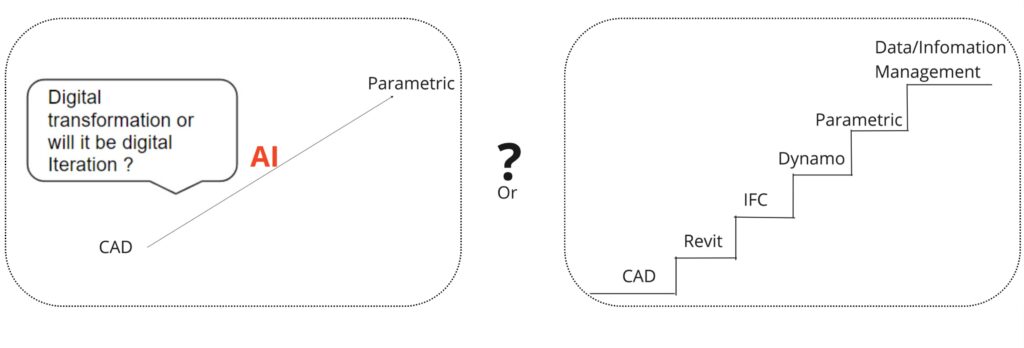
05_2_Podcast Guest: Immanuel Koh
recorded on 7th March, 2024
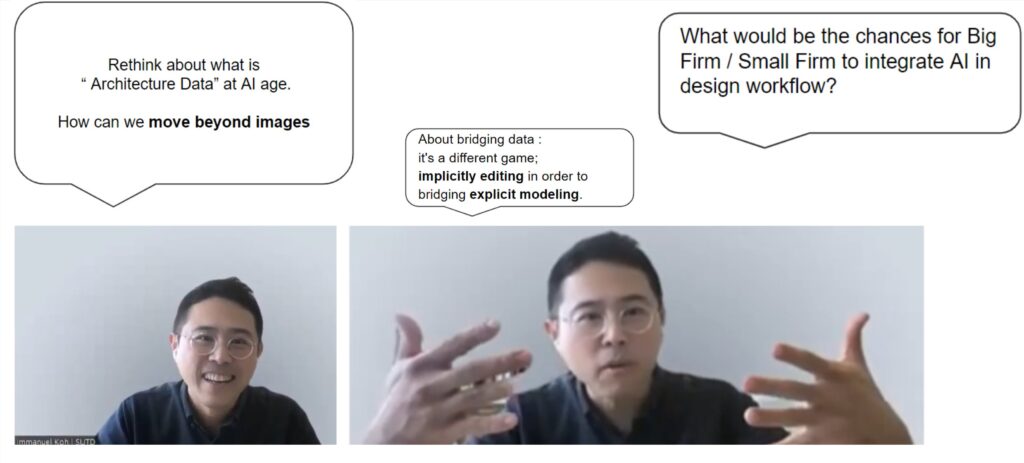
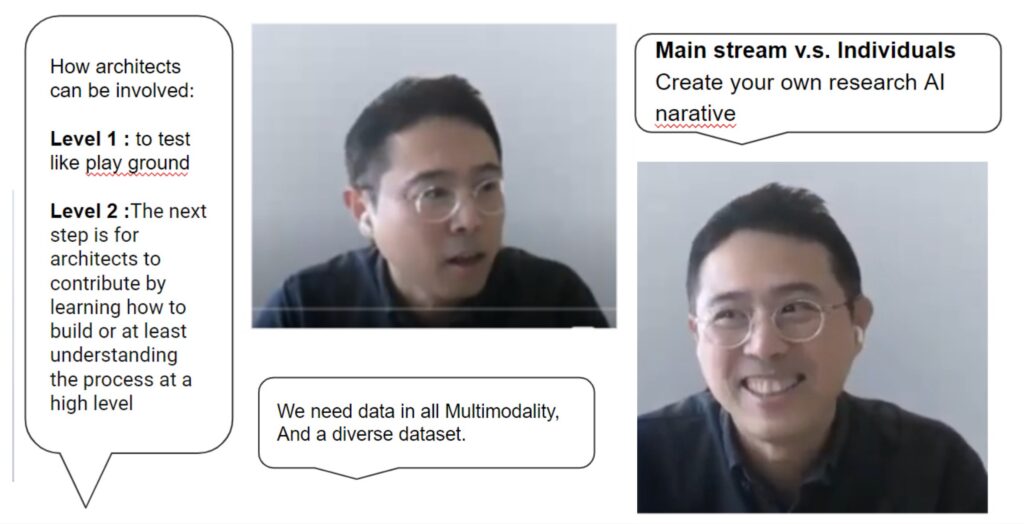

Image_02 discrete sampling by Immanuel Koh.2019
image_03 3D gan housing, 2021
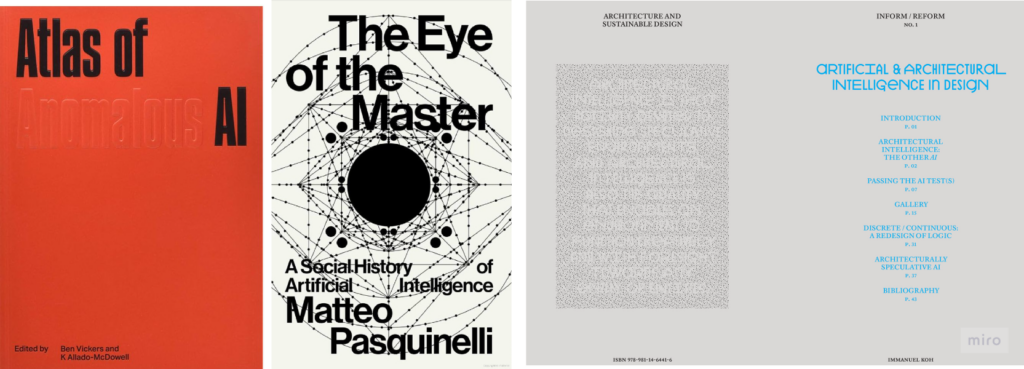
AI in architecture is a developing field that has the potential to revolutionize the way architects design and reconstruct building data form. In the conversation, Immanuel has illustrated in detail as following :
- Challenges in AI application for Architecture in practice, taking MVRDV and ZAHA HADID ARCHITECTS as examples
- Large firms with extensive data sets can benefit from training their own AI models to reflect their design language; while smaller firms can adopt pre-trained models for exploration.
- Detailed illustration about Data Collection and Processing for Architectural AI, taking 3D Gan Housing as example.
- How can we Bridging the Gap Between AI and Architectural Representation.
- How Architects can Engage with AI: proposing a two-level approach for architects to engage with AI.
- There is a growing concern about the homogenization of design aesthetics if everyone uses the same AI models.. Researchers are calling for the development of a critical discourse around AI in architecture to ensure its ethical and creative application.
- AI in foundametal architecture education is needed.
05_3_Angelos Chronis
recorded on 5th April, 2024
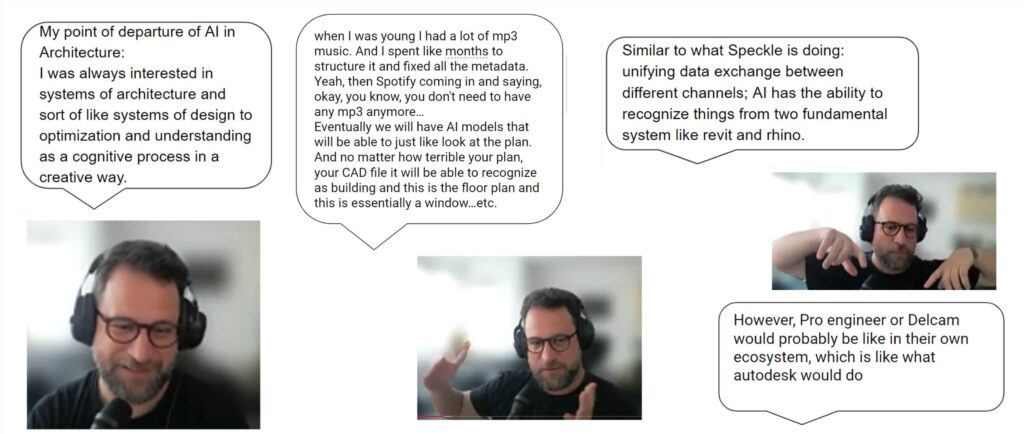
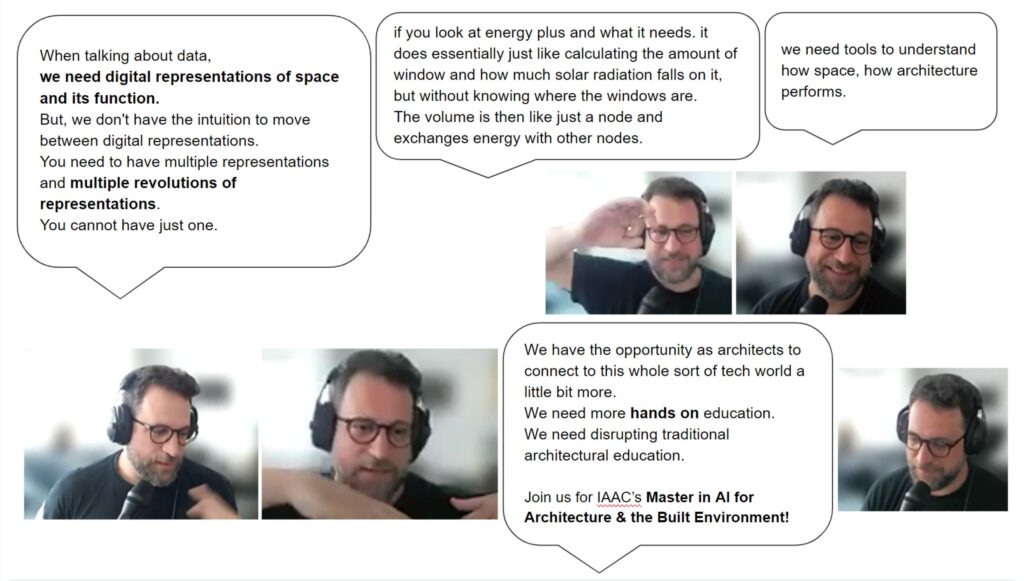
Angelos started by sharing an analogy from his past, comparing his manual organization of a vast music library to the potential evolution of AI in architecture. He believes AI will soon be capable of automatically interpreting architectural plans, identifying building elements like windows and floor plans. This could revolutionize the design process by generating models from simple 2D drawings and massing configurations.
However, more important of all, Angelos illustrated, layer by layer, how an AI-integrated approach is reshaping tranditional understanding of architecture data. He highlighted the challenges and obstacles we might face as we integrate AI into architectural practices:
- Challenges in AI Application in Architecture:
- Current industry’s traditional approach to data and its limitations.
- Discusses the need for architects to understand space performance over aesthetics.
- Mentions the challenge of transitioning from different softwares and data format because the close ecosystems in different professions.
- Data Complexity and Representation:
- Understanging the Importance of proper/essential data representation for AI training.
- Stressing the need for multiple representations and revolutions of representations in AI for architecture.
- Future of AI in Architecture:
- Angelos highlights the potential of AI in environmental simulation.
- The need for AI tools that focus on functionality and performance of architecture instead only about asthetics and producing images.
- Emphasizes the importance of integrating AI education with industry needs, connecting architecture to the tech world.
- New Master’s Course at IAAC:
- Disrupting traditional architectural education.
- The course aims to connect academia with industry, offering a hands-on approach to AI in architecture.
- Angelos invites those interested in innovative architectural education and people who want to shift the carreer path to join the program.

